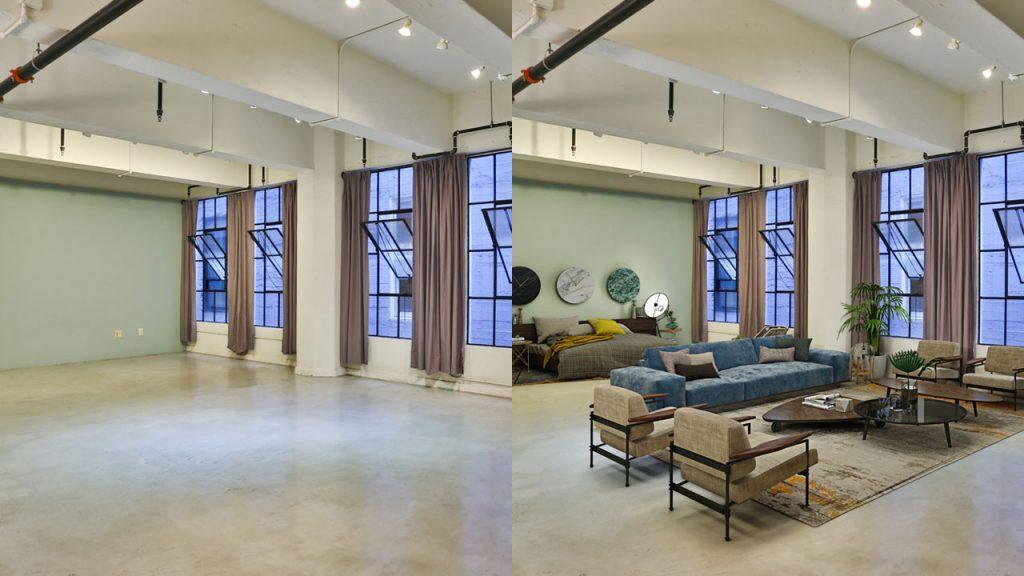In the fast-paced world of real estate, staying ahead of the curve is crucial for success. Traditional property marketing methods, relying heavily on photographs and descriptive text, have long been the norm. However, the advent of virtual tours has revolutionized the way properties are showcased and marketed. In this blog post, we’ll explore the key differences between traditional property marketing and real estate virtual tours in San Jose, or elsewhere, shedding light on their respective advantages and drawbacks.

The Power of Immersive Experiences
One of the primary advantages of virtual tours is their ability to provide immersive and interactive experiences for potential buyers. Unlike static images, virtual tours allow users to navigate through a property, exploring every nook and cranny at their own pace. This level of engagement can significantly enhance a buyer’s understanding of the space, fostering a more profound connection with the property.
Traditional property marketing, on the other hand, relies heavily on static images that may not fully capture the essence of a space. While high-quality photos are essential, they can only offer a limited perspective. Virtual tours, with their 360-degree views, bring a property to life in a way that traditional methods simply cannot match.
Bridging the Gap: Convenience and Accessibility
In today’s digital age, convenience is key. Virtual tours cater to the modern buyer’s desire for instant information and accessibility. Prospective buyers can virtually visit a property from the comfort of their homes, saving time and effort. This is particularly valuable in the global marketplace, where buyers might be located thousands of miles away from the property they are interested in.
Traditional property marketing, relying on static images and textual descriptions, may require buyers to schedule physical visits to truly grasp the feel of a property. This can be time-consuming and inconvenient, especially for those with busy schedules or those looking to explore multiple properties efficiently.
Building Trust Through Transparency
Transparency is a cornerstone of successful real estate transactions. Virtual tours contribute to this transparency by providing a comprehensive and authentic representation of a property. Buyers can assess the condition, layout, and overall appeal of a property without relying solely on the seller’s perspective.
Traditional property marketing, with its reliance on carefully curated images, may inadvertently create a sense of skepticism among buyers. Virtual tours, by offering an unfiltered view of the property, build trust and credibility, potentially expediting the decision-making process.
Overcoming Limitations: The Role of Traditional Marketing
While virtual tours offer numerous benefits, it’s essential to acknowledge that they might not be suitable for every property or target audience. Traditional property marketing methods, such as high-quality photographs and well-crafted descriptions, still play a vital role in showcasing a property’s highlights and creating initial interest. However, for this you need to ensure to work with a professional Bay Area real estate photographer, or wherever you reside.
Moreover, not all potential buyers may have easy access to the technology required to experience virtual tours. Traditional marketing methods ensure that the property remains accessible to a broader audience, including those who may prefer a more straightforward and familiar approach.
Conclusion:
In the ongoing debate between virtual tours and traditional property marketing, the key lies in finding a balance that aligns with the property’s unique characteristics and the preferences of the target audience. Real estate virtual tours in San Jose, or anywhere else, undoubtedly offer a cutting-edge and immersive experience, but traditional methods continue to hold their ground, catering to a diverse market with varying needs.

Real estate professionals can maximize their marketing efforts by leveraging the strengths of both virtual tours and traditional methods. The integration of innovative technology with time-tested practices ensures a comprehensive and appealing presentation of a property, ultimately leading to informed and satisfied buyers in the dynamic world of real estate.


